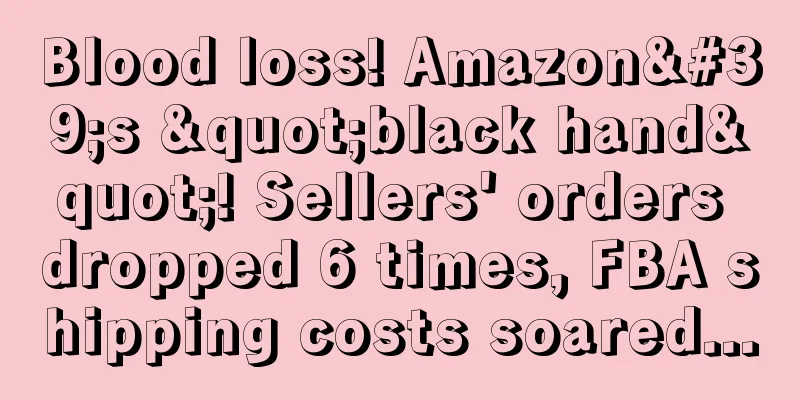Amazon's shocking transformation: Two blockbuster features usher in a new era of sellers' private domain traffic

|
Last July, Amazon launched a new tool, brand-customized promotions, which allows sellers to use "private domain traffic" to increase sales, create exclusive discounts for "buyers who follow or have bought their products", attract old customers to repurchase or recycle wasted traffic. But recently, Amazon has made two major moves to support sellers’ brand flagship stores: 1. The first new tool is the brand flagship store quality rating report. Through this tool, sellers can diagnose their own ratings and optimize their flagship stores based on the ratings. 2. Three new store indicators have been added, including average bounce rate (Avg. Bounce Rate), average dwell time (Avg. Dwell Time) and new to store visitors (New to Store Visitors). These actions show that Amazon is determined to bring brand flagship stores to life and make them the “brand backyard” and “traffic reservoir” for sellers. This new feature can be seen on your brand flagship store page, as shown below: The quality rating in the brand flagship store divides the brand flagship store into three levels: "low/medium/high". Brand owners can view the average stay time of the brand flagship store in the past 30 days and the progress bar to show the number of suggestions taken. At the same time, they can also view the comparison between their brand flagship store and the average stay time and the number of suggestions taken of their peers. From the literal meaning, Amazon will probably give the seller's brand flagship store a score, similar to the listing quality score. According to Amazon's internal data, the higher the rating, the higher the sales: the sales of brand stores with a "high" quality rating are up to 50% higher than those with a "low" rating, and 34% higher than those with a "medium" rating. Then there are the operation suggestions, and the system has good prompts. As shown below: There are 13 suggestions in total, and they are updated every 24 hours. You just need to do all the suggested operations and try to increase the dwell time of your store. Judging from some interface functions of the current beta version, Amazon uses the buyer's stay time in the brand flagship store as a core indicator. Therefore, when optimizing the brand flagship store, you can adjust the optimization direction and strategy based on this data. Stores that have not yet activated this new feature can view store buyer dwell time data under the "Store Interaction" indicator on the flagship store's View Insights page. In addition, this feature seems to be still in a small-scale test, and not all stores have access to this feature. For sellers who don’t have this feature yet, you can be patient and pay more attention to the menu in the brand flagship store. Maybe it will be updated one day~ To help sellers better understand consumers’ interactive behaviors on each page of their brand flagship store, so as to better judge the quality of the page and clarify the direction of optimization, three key indicators have been added to the data insights dashboard of brand flagship stores: ▪ Average Bounce Rate ▪ Average Dwell Time ▪ New to Store Visitors It is no exaggeration to say that these three data indicators can help us understand how consumers interact with each page in the brand flagship store, and then measure and improve the operating results of the brand flagship store. At this point, the brand flagship store’s data insight dashboard also provides sellers with 14 data indicators. One of the most striking of these metrics is “Followers,” which is the number of customers who follow a brand through its flagship store or the “Follow” button on a post. This feature has been launched for quite a long time. Although it is still in beta version, it is almost a major concession made by Amazon. To a certain extent, it means that Amazon allows sellers to save their own brand private domain traffic on the site. Next, the brand flagship store will become a "private traffic pool" in a relative sense, continuously accumulating users who have a favorable impression of the brand. At the same time, Amazon has also begun to allow brand flagship stores to conduct "targeted marketing" for fans of their own brands. From this point of view, running a good brand flagship store can increase store sales. Therefore, Huluwa strongly recommends that sellers make good use of brand flagship stores, especially at key moments such as Member Day, to improve sales performance. |
<<: Save your life at the critical moment! Amazon's latest account protection AHA plan!
>>: Amazon has tens of thousands of misjudged links! They are being restored one after another
Recommend
Register your trademark in the United States as early as possible! USPTO plans to adjust trademark fees in October
On June 19, 2020, the United States Patent and Tra...
Amazon advertising keyword matching methods - broad match, phrase match, exact match, negative keywords
We know that in Amazon advertising, there are ofte...
What is VMLogin? VMLogin Review
VMLogin Chinese version anti-association fingerpri...
What is Beautylish? Beautylish Review
Beautylish was founded in the fall of 2010 and has...
What is Offer to Buyers? Offer to Buyers Review
The "Offer to Buyers " feature allows se...
What is Greetabl? Greetabl Review
Greetabl was founded in 2015. It is a creative gif...
Cross-border e-commerce product selection: Top 10 best-selling products in summer 2019
The heat wave of the sun is coming, and people ar...
Excess inventory + soaring returns! US retailers are under great pressure after the peak season!
According to the latest survey of 500 US retailers...
What is Boux Avenue? Boux Avenue Review
Boux Avenue is a company that specializes in women...
Global supply chain issues escalate! Walmart, Target and other companies rent private boats to deliver goods!
According to MarketWatch, as supply chain disrupti...
What is Buffer? Buffer Review
Buffer is a marketing automation tool that helps y...
What is the Gulf Cooperation Council? Gulf Cooperation Council Review
The Cooperation Council for the Arab States of the...
Amazon launches new feature to make it easier for sellers to edit products
Amazon sellers often need to deal with store issu...
What is Vente-Privée? Vente-Privée Review
Vente-Privée was founded in France in 2001. It is ...
Review adds new features, shared review has been officially confirmed!
Reviews have always been an extremely important p...









